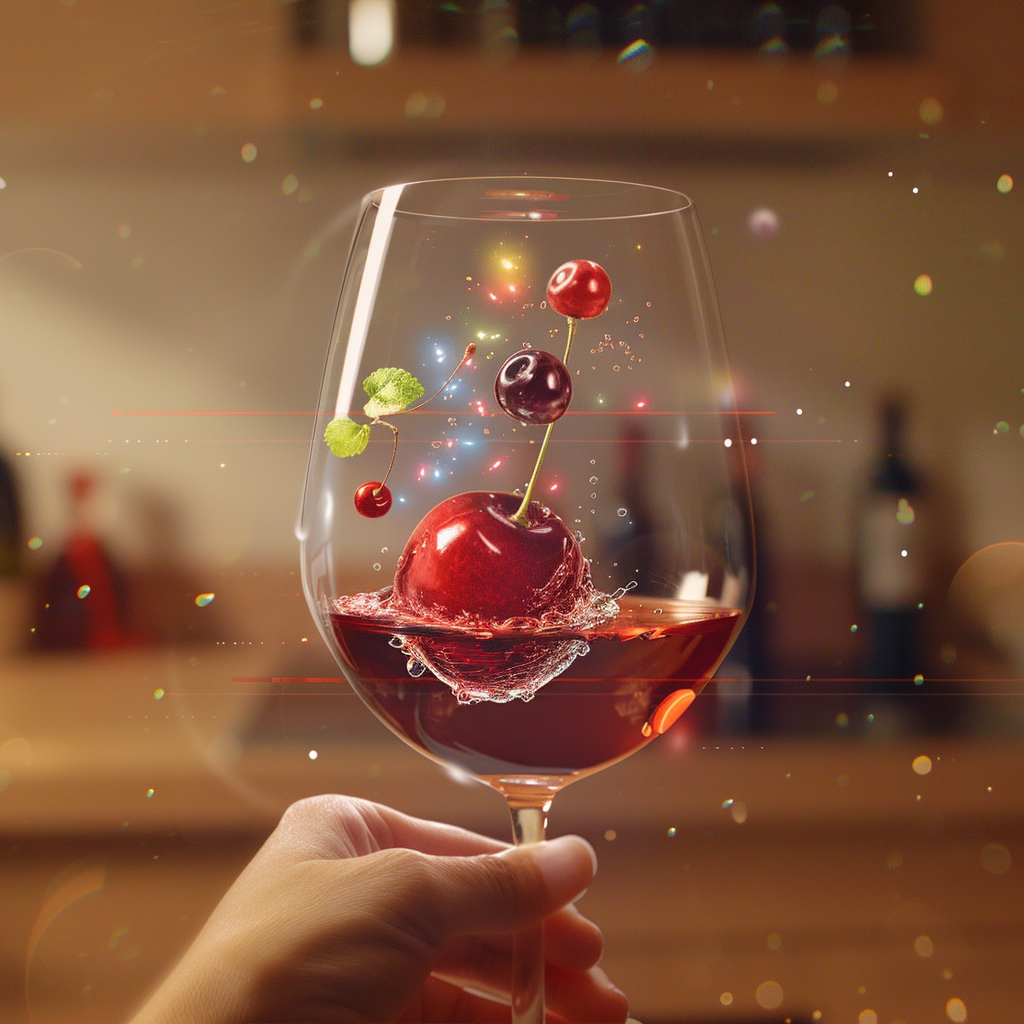The flavors of port wine
The Flavorful World of Port Wine: Understanding the Aromas and Tastes
Port wine, with its rich heritage and complex profiles, offers an extensive range of flavors that can captivate even the most seasoned connoisseur. This article delves into the diverse flavors found in different styles of port wine, the scientific reasons behind their presence, and how these flavors evolve over time, particularly in vintage ports.
Exploring the Flavors of Port Wine
Port wine boasts a broad spectrum of aromas and tastes, which can be categorized into several groups:
Citrus: Orange, mandarin, lemon, kumquats
Vegetal: Herbs, mint, laurel, resin
Nuts: Walnut, hazelnut, almond, marzipan
Toasted and Roasted: Toast, roasted nuts, coffee, chocolate
Sweet and Confectionery: Honey, toffee, caramel, cherry bonbon, jam
Spices: Ginger, pepper, cinnamon, clove
Fruity: Fresh fruits (cherry, strawberry, raspberry, blackberry, cassis), dried fruits (raisin, fig, date, prune, apricot, apple), tropical fruits (papaya, mango)
Floral: Blossom, roses
Woody and Smoky: Cedar wood, cigars, leather
Each flavor group adds a distinct layer to the port wine experience, contributing to its complexity and depth.
Why These Flavors Exist in Port Wine
Grape Varieties in Port Wine
The diverse and intricate flavors of port wine begin with the grape varieties used in its production. Each grape variety contributes its own unique set of aromas, flavors, and structural elements to the final wine. Here are some of the key grape varieties used in port wine and their flavor profiles:
Touriga Nacional
Flavor Profile: Known for its intense and complex flavors, Touriga Nacional imparts floral notes like violet and rose, along with rich dark fruit flavors such as blackberry, blueberry, and plum. It also contributes a robust tannin structure.
Significance: This variety is often considered the backbone of many high-quality ports due to its ability to produce wines with great aging potential and depth.
Tinta Roriz (Tempranillo)
Flavor Profile: Tinta Roriz offers flavors of ripe red fruits like cherry and raspberry, as well as earthy and spicy notes such as tobacco and clove.
Significance: This grape provides body and structure, contributing to the complexity of the blend with its moderate acidity and firm tannins.
Touriga Franca
Flavor Profile: This variety adds vibrant fruit flavors like strawberry and raspberry, along with floral notes and a hint of spice.
Significance: Touriga Franca is valued for its aromatic qualities and its ability to add softness and elegance to the blend.
Tinta Barroca
Flavor Profile: Known for its rich, ripe fruit flavors such as blackberry and plum, Tinta Barroca also brings a touch of chocolate and spice.
Significance: This grape helps balance the blend by adding smoothness and body, contributing to the wine’s overall richness.
Tinto Cão
Flavor Profile: Tinto Cão imparts bright acidity and flavors of red fruits, along with earthy and herbal notes.
Significance: Its high acidity and tannin content make it an important component for aging potential and structure in port wines.
Do you wish to learn more about the Grapes used in Port Wines? Then read everything you need to know in our knowledge base
Flavors in the Meta World
Winemaking Process of Port Wine
The winemaking process for port wine is unique and contributes significantly to its distinctive flavors. Here’s a detailed look at the key steps involved:
Fermentation and Fortification
Fermentation: Port wine begins its life like any other wine, with the fermentation of grape juice. However, the fermentation is intentionally stopped early to preserve the natural sweetness of the grapes.
Fortification: This early cessation of fermentation is achieved by adding a neutral grape spirit, known as Aguardiente, to the wine. This fortification process not only retains the residual sugar but also increases the alcohol content to around 19-22%.
Impact on Flavors: The fortification process is crucial in creating the rich, sweet profile of port wine. It locks in the fresh fruit flavors from the grapes while adding complexity and depth through the integration of the spirit.
Blending
Art of Blending: Blending different grape varieties and wines from various vintages is a skillful process that allows winemakers to create a balanced and harmonious port.
Consistency and Complexity: Blending ensures consistency in style and quality, while also adding layers of complexity to the final wine.
Aging of Port Wine
Aging is a defining factor in the development of port wine’s flavors and character. Depending on the style, port wine can be aged in various ways, each method imparting different characteristics to the wine.
Aging in Wooden Casks (Tawnies and Colheitas)
Oxidative Aging: Tawny ports and Colheitas are aged in wooden casks, which allow gradual exposure to oxygen. This oxidative aging process develops flavors of nuts, caramel, and dried fruits, and results in a smoother, more integrated wine.
Flavors Over Time: Over years or even decades, these ports develop complex flavors of toffee, caramel, roasted nuts, and spice, with a lighter, amber color.
Aging in Bottles (Vintage Ports)
Reduction Aging: Vintage ports are aged in large bottles, where they are protected from oxygen. This reductive aging process preserves the intense fruit flavors and tannic structure, allowing the wine to develop slowly over time.
Evolution of Flavors: In the bottle, vintage ports gradually evolve, with the tannins softening and the primary fruit flavors melding into secondary and tertiary aromas such as dried fruits, tobacco, and leather.
Scientific Reasons Behind Port Wine Flavors
The diverse and complex flavors in port wine are a result of various chemical reactions and compounds:
Terpenes: These aromatic compounds are responsible for floral and citrus aromas. They are found naturally in the grapes and are enhanced during fermentation.
Esters: Formed during fermentation, esters contribute to the fruity and sweet aromas in port wine, such as banana, apple, and pear.
Phenolic Compounds: Including tannins and Anthocyanin, these compounds contribute to the color, bitterness, and astringency of port wine. They also influence the wine’s aging potential.
Maillard Reaction: This reaction between amino acids and sugars occurs during aging in wooden casks, creating complex flavors like toffee, caramel, and roasted nuts.
How Flavors Evolve Over Time in Vintage Port
Vintage port continues to develop and evolve in the bottle over many years, offering a dynamic tasting experience:
Youth (0-10 years): Dominated by fresh and vibrant fruit flavors (berries, plums) and floral notes.
Maturity (10-30 years): The wine develops more complex flavors, including dried fruits (figs, raisins), nuts, and spices (cinnamon, clove). The tannins soften, creating a smoother texture.
Aged (30+ years): In very old vintage ports, the flavors become more nuanced, with pronounced notes of toffee, caramel, tobacco, and leather. The fruit flavors mellow, becoming more integrated and harmonious. Some great vintages can also show strong signs of medicinal flavors, that really blow you away.
The flavor profile of port wine is a mix of complex and evolving tastes. For those well-educated in the world of port, understanding the intricate balance of these flavors adds a new dimension to the appreciation of this exceptional wine. From the vibrant notes of a young vintage to the deep, nuanced flavors of a well-aged tawny, port wine offers a journey of sensory discovery.
For more in-depth articles and insights into the world of port wine, visit prtwine.com. Our platform is dedicated to providing expert knowledge and engaging content for connoisseurs and enthusiasts alike.














